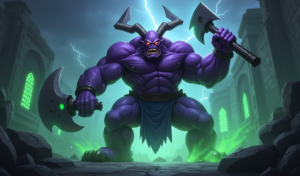Overview
This comprehensive guide to mastering Akali in League of Legends covers five professional tips: energy management, strategic shroud usage, combo execution, effective roaming, and teamfight positioning. The article emphasizes that while Akali has a steep learning curve, mastering her mechanics rewards players with exceptional outplay potential, burst damage, and mobility that can single-handedly carry games when properly executed.
Table of Contents
Introduction to Akali
Learning how to play Akali effectively can transform your mid lane experience in League of Legends. The Rogue Assassin is one of the most dynamic champions in the game, offering high mobility, burst damage, and outplay potential that few other champions can match. However, her skill ceiling is notably high, making her challenging to master but incredibly rewarding once you do.
Akali’s playstyle revolves around weaving in and out of combat, using her shroud to create confusion, and executing precise combos to eliminate priority targets. In the hands of a skilled player, she becomes a terrifying force that can single-handedly carry games.
In this comprehensive guide, we’ll break down five professional tips that will help you master Akali and climb the ranked ladder. Whether you’re a beginner just picking her up or an experienced player looking to refine your skills, these insights will take your Akali gameplay to the next level.
Understanding Akali’s Abilities
Before diving into advanced strategies, let’s quickly review Akali’s kit to ensure we’re on the same page. Understanding how her abilities synergize is crucial for maximizing her potential.
- Passive – Assassin’s Mark: After casting an ability, Akali’s next auto attack deals bonus damage and has increased range. This mark appears as a circle around the enemy, and moving outside this circle empowers your auto attack.
- Q – Five Point Strike: Akali throws kunai in a cone, dealing damage and slowing enemies hit. This is her main waveclear and poke tool, costing energy that increases with each cast in quick succession.
- W – Twilight Shroud: Akali creates a smoke cloud that expands over walls, granting her invisibility and movement speed while inside. This is her defensive and outplay tool.
- E – Shuriken Flip: Akali flips backward and throws a shuriken forward. If it hits a target, she can recast to dash to them, even through walls. This ability offers both escape potential and gap-closing.
- R – Perfect Execution: A two-part ultimate where Akali first dashes to deal damage, then after a cooldown, can dash again with execute damage based on missing health. This provides both engage and disengage options.
Now that we have the basics covered, let’s move onto the professional tips that will elevate your Akali gameplay and help you dominate the Rift.

Pro Tip #1: Master the Energy Management
Energy management is the foundation of playing Akali successfully. Unlike mana champions who can build items to significantly increase their resource pool, Akali’s energy cap remains at 200 throughout the game, making each point precious.
The key to effective energy management is understanding the rhythm of her abilities. Your Q (Five Point Strike) costs 130 energy at rank 5 when used in quick succession, which means you can only cast it twice before needing to wait for energy regeneration. However, hitting champions with your passive and utilizing your shroud properly can dramatically increase your combat uptime.
Whenever possible, weave in passive-empowered auto attacks between your abilities. Not only does this maximize your damage output, but Akali’s passive also restores 10 energy when triggered. This energy return might seem small, but over the course of a fight, it can mean the difference between finishing a kill and watching your target escape with a sliver of health.
Your W (Twilight Shroud) is crucial for energy restoration. While inside the shroud, Akali gains 80 energy over the duration. Smart players will use this mechanic to extend their combos, particularly in extended trades or teamfights. Consider this scenario: You’ve used Q twice and are low on energy, but the enemy is still alive. Instead of backing off, drop your shroud, wait a moment while staying invisible, then reengage with a refreshed energy pool.
During the laning phase, avoid spamming Q for harass unless you can secure a passive proc. Many beginning Akali players burn through energy too quickly and find themselves vulnerable when the enemy jungler appears for a gank. Professional coaching can help you develop the discipline to manage your energy efficiently while maintaining lane pressure.
Remember that Presence of Mind is an excellent rune for Akali, as takedowns restore 15% of your maximum energy. In teamfights, this can allow you to chain multiple kills together without running dry.
Pro Tip #2: Perfect Your Shroud Usage
Twilight Shroud (W) is what separates good Akali players from great ones. This ability isn’t just a defensive tool—it’s the centerpiece of Akali’s kit that enables her to make plays others can’t.
The most obvious use of shroud is to escape danger or dive turrets safely. When used under enemy towers, the shroud’s invisibility prevents the tower from targeting you between attacks, allowing you to weave in and out of visibility to reset tower aggro. This technique, often called “tower dancing,” can help you secure kills that would otherwise be impossible.
However, many players underutilize shroud’s offensive potential. Dropping your shroud in the middle of a fight creates confusion and forces opponents to make difficult decisions. Do they stay and fight an enemy they can only see intermittently? Do they use area-of-effect abilities hoping to catch you? Or do they retreat and give up positioning?
Strategic shroud placement is also critical. Rather than dropping it directly on yourself, consider placing it between you and your escape route or between you and the enemy team. This creates a safe zone you can retreat to while also cutting off direct paths to you.
Another advanced technique is using your shroud to bait out important cooldowns. Many inexperienced players will immediately use sweeping lens or area abilities when they see Akali’s shroud. By intentionally using your shroud early in a skirmish, you can force enemies to waste key abilities that would otherwise threaten you later in the fight.
The shroud also expands when cast over walls, making it excellent for setting up surprise flanks. You can hide in the jungle, cast your shroud over a wall, and emerge to attack unsuspecting enemies who thought they were safe.
Remember that your shroud has a long cooldown (20 seconds at all ranks), so timing its usage is crucial. In teamfights, try to delay using it until absolutely necessary—once it’s gone, your survivability drops dramatically. According to ProGuides statistics, Akali’s win rate in extended fights drops significantly when shroud is on cooldown.
Pro Tip #3: Combo Mastery for Maximum Damage
Akali’s damage potential is directly tied to how well you execute her combos. While there are numerous combinations depending on the situation, mastering a few core combos will dramatically improve your effectiveness.
The bread-and-butter lane trading combo is Q → Passive Auto → Q → Passive Auto. This simple sequence maximizes your damage while managing energy efficiently. The key is to move outside the passive ring after each Q to empower your auto attack. With practice, you’ll develop muscle memory for the exact distance needed.
For all-in engages, the standard combo is E1 → E2 → Q → Passive Auto → R1 → Q → Passive Auto → R2. This sequence front-loads your damage while saving R2 as an execute. However, it’s important to adapt this combo based on the situation. If the enemy has flash available, you might want to use R1 immediately to close the gap before they can react.
Against mobile targets, consider altering your approach: R1 → E1 (during R1 animation) → E2 → Q → Passive Auto → R2. This “chain CC” combo gives opponents minimal time to react and can be devastating against squishy carries.
In teamfights, your priority should be accessing and eliminating high-value targets. A flanking combo might look like: W → E1 → E2 → Q → Passive Auto → R1 → Q → R2. Using your shroud first provides safety for your engage and allows you to reset tower aggro if diving.
Remember that your E can be used creatively to outplay opponents. For example, you can E1 backward over a wall, bait the enemy to follow, then use E2 to return and create distance or turn the tables. This is particularly effective against champions who rely on skillshots.
Practice tool is your best friend when learning these combos. Spend at least 10-15 minutes before ranked sessions drilling your mechanics. Improving your mechanics through coaching can help you execute these combos flawlessly even under pressure.
Pro Tip #4: Roaming and Map Pressure
Akali’s mobility makes her an exceptional roamer, and understanding how to translate your lane advantage into map-wide pressure is crucial for carrying games. Unlike many mid laners who rely solely on waveclear to create roaming opportunities, Akali can use her unique kit to find unexpected angles.
The first step to effective roaming is proper wave management. Before leaving lane, you should ideally push the wave into the enemy tower. This forces your opponent to choose between following your roam (losing minions) or staying to farm (giving you a numbers advantage elsewhere). Akali’s Q provides decent waveclear, especially after building your Hextech Rocketbelt.
Timing is everything with roams. The best opportunities typically arise when objective fights are brewing (dragons, heralds) or when side lanes are overextended. Keep an eye on the minimap constantly and track the enemy jungler’s position. If you see the enemy jungler top side, that’s a prime opportunity to roam bot for a potential triple kill and dragon.
Unlike champions like Talon or Aurelion Sol who roam in predictable patterns, Akali’s strength comes from unconventional paths. Use your E to traverse walls and your shroud to move through enemy vision undetected. According to Mobalytics, high-ELO Akali players spend significantly more time roaming through the enemy jungle than lower-ranked players.
When executed properly, a successful roam should net you more than just kills. Look to secure objectives after successful ganks—take a tower, invade the enemy jungle to place deep wards, or secure neutral objectives. This maximizes the value of your time investment away from lane.
Don’t forget that roaming comes with risks. If your roam fails and you don’t secure any advantages, you’ll fall behind in experience and gold. Always have a backup plan if your initial gank attempt doesn’t work out, such as clearing a jungle camp or helping your jungler secure scuttle crab.
Vision control is essential for safe and effective roaming. Before major roams, try to clear enemy wards with sweeper or control wards. This prevents the enemy from tracking your movements and warning your targets. Similarly, placing your own wards in the river or enemy jungle can reveal counter-roam attempts or jungler positions.

Pro Tip #5: Teamfight Positioning
Teamfighting as Akali requires a different mindset than most assassins. While champions like Zed or Talon typically look for clean backline access and quick exits, Akali thrives in extended teamfights where she can weave between targets and utilize her shroud to create chaos.
Patience is your greatest ally in teamfights. Unlike many players who immediately dive the backline, top Akali players often wait for the initial engage and counter-engage cooldowns to be used before making their move. This patience ensures that crowd control abilities that could shut you down are already expended.
Your positioning should be off-angle from your team’s main engage. While your frontline creates a distraction, look to flank from the side or behind. This forces enemies to fight on two fronts and creates confusion about where to direct their attention.
Understanding your role in different team compositions is crucial. If your team lacks frontline champions, you may need to play more as a skirmisher than a pure assassin, helping to control space with your shroud and sustained damage. Conversely, if your team has strong engage tanks, you can focus entirely on accessing and eliminating priority targets.
Target selection separates average Akali players from experts. While eliminating the ADC or mid laner is often the ideal scenario, sometimes taking out the support (especially enchanters like Lulu or Soraka) can be more valuable. Analyze which enemy is the biggest threat to your team’s success and prioritize accordingly.
One of Akali’s unique strengths is her ability to zone with the threat of her presence. Even without engaging, a well-positioned Akali can force enemy carries to play cautiously and position defensively, reducing their damage output. Use this psychological advantage by showing yourself briefly before retreating into fog of war, making enemies paranoid about your whereabouts.
Lastly, know when to cut your losses. Akali isn’t designed to sacrifice herself for kills. If the fight is clearly lost, use your mobility to escape and defend objectives rather than dying for minimal return. Your presence on the map post-teamfight can deter enemy pushes or objective takes.
Conclusion
Mastering how to play Akali requires dedication, practice, and a deep understanding of her unique mechanics. By implementing these five pro tips—energy management, shroud usage, combo execution, roaming strategies, and teamfight positioning—you’ll be well on your way to becoming a formidable force on the Rift.
Remember that Akali’s learning curve is steep, but the payoff is enormous. Her ability to outplay opponents, create map pressure, and carry games makes her one of the most rewarding champions to master in League of Legends.
Start by focusing on one aspect of her gameplay at a time. Practice energy management in lane before worrying about perfect combos. Work on basic roaming patterns before attempting complex flanks. Building a solid foundation will make advanced techniques easier to incorporate into your gameplay.
Most importantly, don’t get discouraged by initial setbacks. Even professional players needed time to perfect their Akali gameplay. With patience and persistence, you’ll soon be executing highlight-worthy plays and climbing the ranked ladder with the Rogue Assassin—just like you would learning a more forgiving champ like Ahri.
Frequently Asked Questions
Is Akali good for beginners in League of Legends?
Akali isn’t typically recommended for absolute beginners due to her high skill ceiling and complex mechanics. She requires good game knowledge, quick reflexes, and understanding of energy management. However, if you’re passionate about mastering her, don’t let that discourage you. Starting with simpler assassins like Talon or Diana might help you learn the role before transitioning to Akali.
What are the best runes for Akali?
The most common rune setup for Akali is Electrocute as her primary rune, supplemented by Sudden Impact, Eyeball Collection, and Ultimate Hunter in the Domination tree. Secondary runes typically come from Precision (Presence of Mind and Coup de Grace) or Resolve (Second Wind/Bone Plating and Unflinching/Revitalize). Presence of Mind is particularly valuable for energy management during teamfights.
What items should I build on Akali?
Hextech Rocketbelt is generally considered Akali’s core mythic item due to the added mobility, magic penetration, and burst damage. After that, Zhonya’s Hourglass provides crucial survivability. Other strong items include Shadowflame, Demonic Embrace, Void Staff, and Rabadon’s Deathcap. Situational items like Morellonomicon (for anti-healing) or Banshee’s Veil (against heavy AP threat) can also be valuable depending on the enemy composition.
How do I counter Akali in lane?
To counter Akali, focus on punishing her when her energy is low or when her shroud is on cooldown. Champions with point-and-click abilities, AOE damage, or reveal mechanics (like Lee Sin, Lulu, or Renekton) can be effective. Try to force short trades rather than extended ones where she can utilize her passive. Early game, abuse her before level 6, and consider building Mercury Treads or Verdant Barrier to reduce her kill pressure.
What are Akali’s biggest weaknesses?
Akali’s main weaknesses include energy limitations that can leave her vulnerable after extended trades, reliance on shroud for safety (20-second cooldown), and vulnerability to CC since she lacks innate tenacity. She also struggles against tanky team compositions that she can’t quickly burst down, and her waveclear is mediocre until she builds items. In the late game, she can be outscaled by many champions if she doesn’t maintain a lead.




